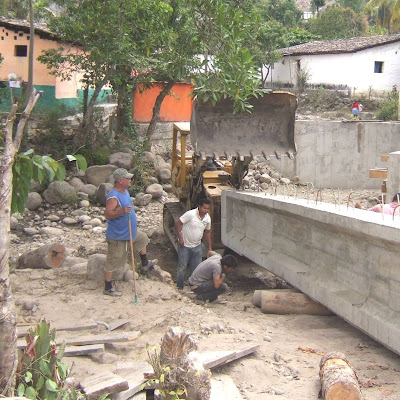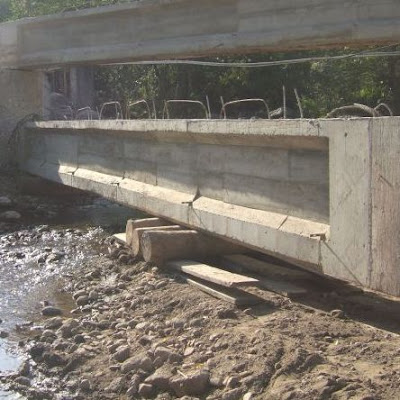

The following pictures will show the journey of the second beam (you can see the first beam sitting atop the support walls):

Russell, driving the front end loader, pulls the beam down the hill toward the river.

Frequent adjustments had to be made to the rollers and to the path. At times, the progress in an hour would be less than a yard.

As the beam heads into the riverbed, it must be turned to manipulate it into the space between the walls. More log adjusting is required, of course. Adjusting logs while a 20 ton beam sits on top of them isn't a quick or simple process!



Manipulating the beam into place by the wall was another challenge. With the first beam in place, Russell was working in tight quarters, as he maneuvered the second beam around while the first beam was in his way.
With the beam basically in place, it was time to lift it up onto the top of the 9 foot high walls. Those pictures will come soon.

3 comments:
The patience of this team is almost "unamerican"! ;). What an accomplishment!
Jane McSweeney
Wow! This is amazing. Thank you for your detailed explainations and photos. May God bless you for what you are doing to help the people who need this bridge.
The workers must have been exhausted at each day's end.
Post a Comment